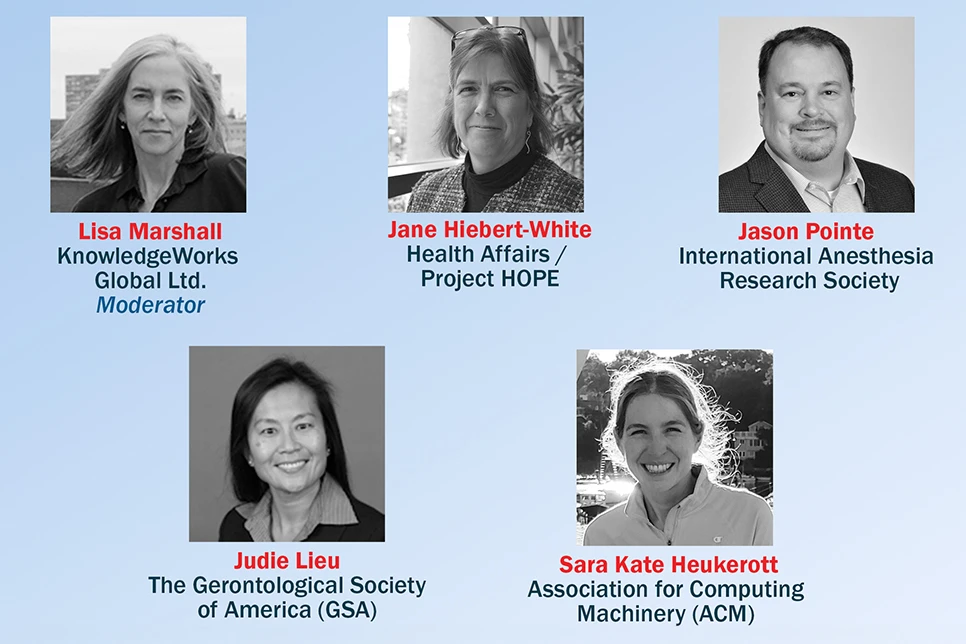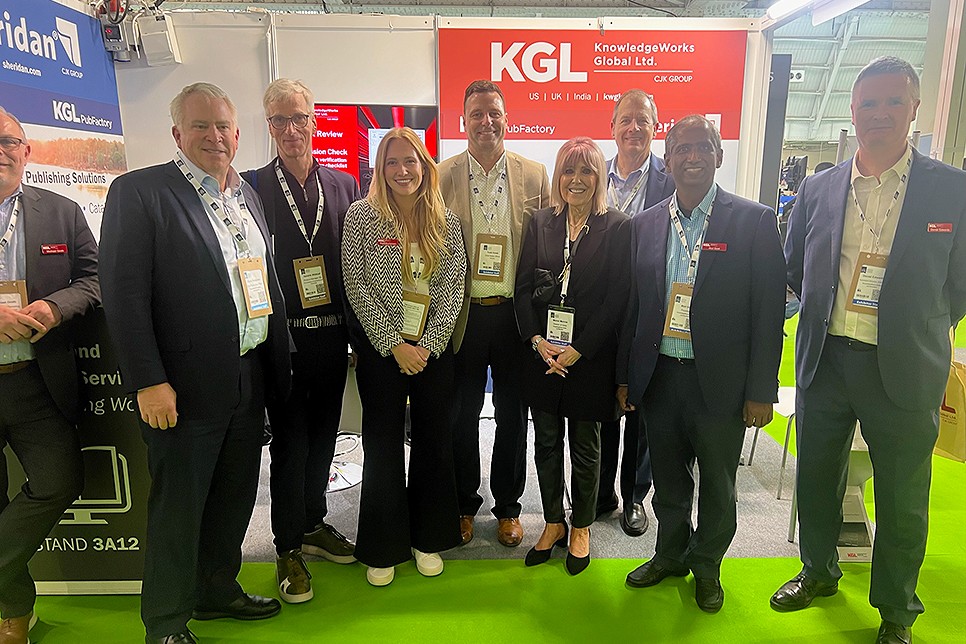by KnowledgeWorks Global Ltd.
Hiring, transitioning and onboarding an Editor-in-Chief is one of the most important yet complex and lengthy processes scholarly journals must undertake. From assembling a recruiting committee and creating checklists to compiling shortlists and evaluation matrixes, the groundwork required alone can take months. But all the hard work is worth it if you want to secure the best possible candidate who meets the criteria of your journal and is aligned with its core values and goals.
In our recent Successful Recruiting and Onboarding of Your Editor-in-chief webinar, hosted by KGL Consulting and our very own Lisa Marshall, four experts from across the scholarly journal community gathered to offer their unique perspectives on the topic. The panel comprised Jane Hiebert-White (Health Affairs), Jason Pointe (International Anesthesia Research Society), Judie Lieu (The Gerontological Society of America) and Sara Kate Heukerott (Association for Computing Machinery)
Having all recently conducted Editor-in-Chief searches, the panelists each shared their varied first-hand experiences of the search process, while providing valuable tips on how to hire and onboard for the top job in a smooth, efficient and fair way.
Here are five key takeaways we gleaned from this insightful debate:
Be patient, and flexible
EIC search processes certainly don’t happen overnight and can generally take anywhere between five months to a year to complete. While the panelists all concurred that having a timeline in place and knowing how much time should be allocated to each stage was helpful, being flexible, fluid and willing to extend deadlines was also a key lesson.
Lieu said: “Extending deadlines is ok because it can allow workgroups to consider the widest possible variety of applications and ensure fair, balanced and open competition.” Heukerott added: “We try to start the process a year out from the initial questionnaires with the EICs who are stepping down. There are a lot of stages in this process so it is important to build in a buffer and really give yourself extra time and freedom.”
A time to take stock
The panellsts agreed that EIC searches often provide a good opportunity to take a step back and map out the vision of a journal and reassess its values, aims and long-term strategy.
“EIC searches are a really good time to reflect on where the journal stands and what are the main areas of improvement, but also to look at what your organization’s goals are for the journal program. It’s important to then choose an EIC who is going to work with the overall strategy of your organization,” commented Heukerott.
Pointe echoed this sentiment: “We saw our EIC search as a good time to take a snapshot to really find out where we stood and what needed to be addressed in our search ahead of going into the process. As part of our groundwork, we conducted surveys among constituents and stakeholders to both gather opinions on the incumbent editor’s leadership and the status, perception and strategic direction of our journal.”
Cast a wide net
In the early stages of the recruitment process, as many avenues as possible should be exhausted in order to build a substantial list of potential candidates. This is when search committees and volunteer workgroups will really be put to the test as they comb through peer networks for potential suiters.
Hiebert White explained the benefits of compiling a “seed list” to help expand reach: “We pooled names from a variety of sources including competitor journals, the board and committee, senior staff, guest editors and authors. We also conducted an open call through HR and a social media campaign. Then we interviewed candidates and asked them to recommend names and that’s when we were really able to expand our list to upwards of 200 names.”
“Casting a wide net requires a lot of time and resource so we tend to work with consultants to manage this process. This approach allows our workgroup volunteers to focus on personal and peer networking to encourage applicants,” responded Lieu.
Embedding DEI throughout
A growing priority for all the panelists was ensuring that DEI was as baked into the EIC search process as possible.
For Hiebert White, diversity needed to be brought into focus during the earliest stages of the process: “We wanted to address our equity goals starting upfront with the composition of the committee. Although we kept our committee small, we tried to achieve diversity across gender, race, ethnicity, age, experience and disciplines. In our view, representation needs to be more than just token.”
Lieu concurred, adding: “The representation of the workgroup (search committee) should be as diverse as possible, and indeed one of our principal goals is to increase diversity in our volunteer leadership across ability, age, ethnicity, race and sexual orientation in order to reflect the demographics of the US and our global society.”
Transitioning and onboarding
Concluding the debate, Pointe addressed a question from the audience on how much time should be allocated for transitioning from the incumbent EIC to the new hire: “Due to the candidate that was selected, we had the luxury of not needing the full amount of time we had allocated for onboarding as they already had previous, high-level editorial experience. This was a sharp contrast to my previous onboarding experience where the EIC had far less knowledge, so it was six months spent doing on-the-job training to get them up-to-speed. But allowing six months is generally good as it allows you to map out, at your own pace, the editorial and production schedule, earmarking which will be the first edition with the new EIC and working back from there.”
For more insights into successfully recruiting and onboarding your editor-in-chief, check out the webinar recording, read more about KGL Consulting’s EIC recruitment service, or please get in touch.





